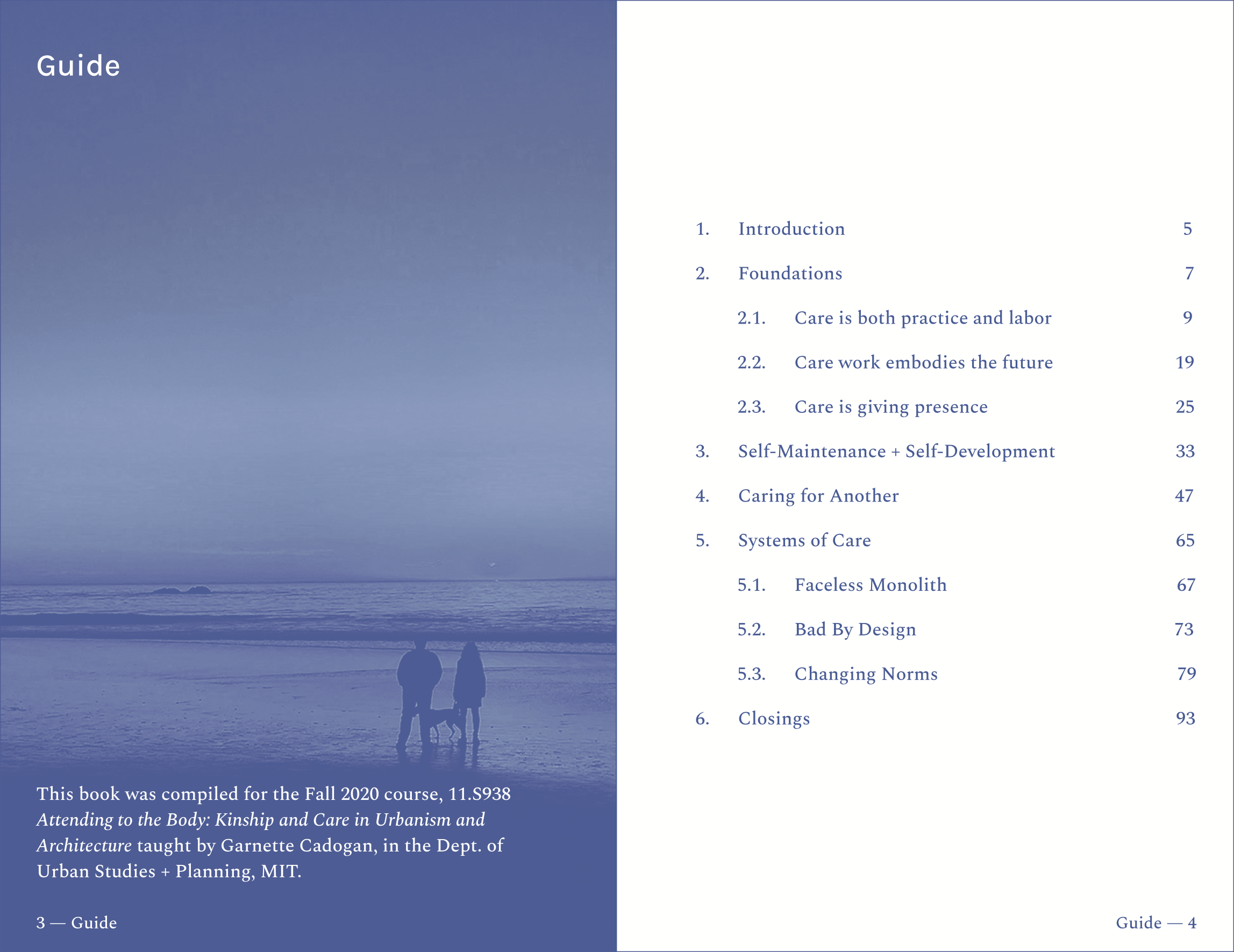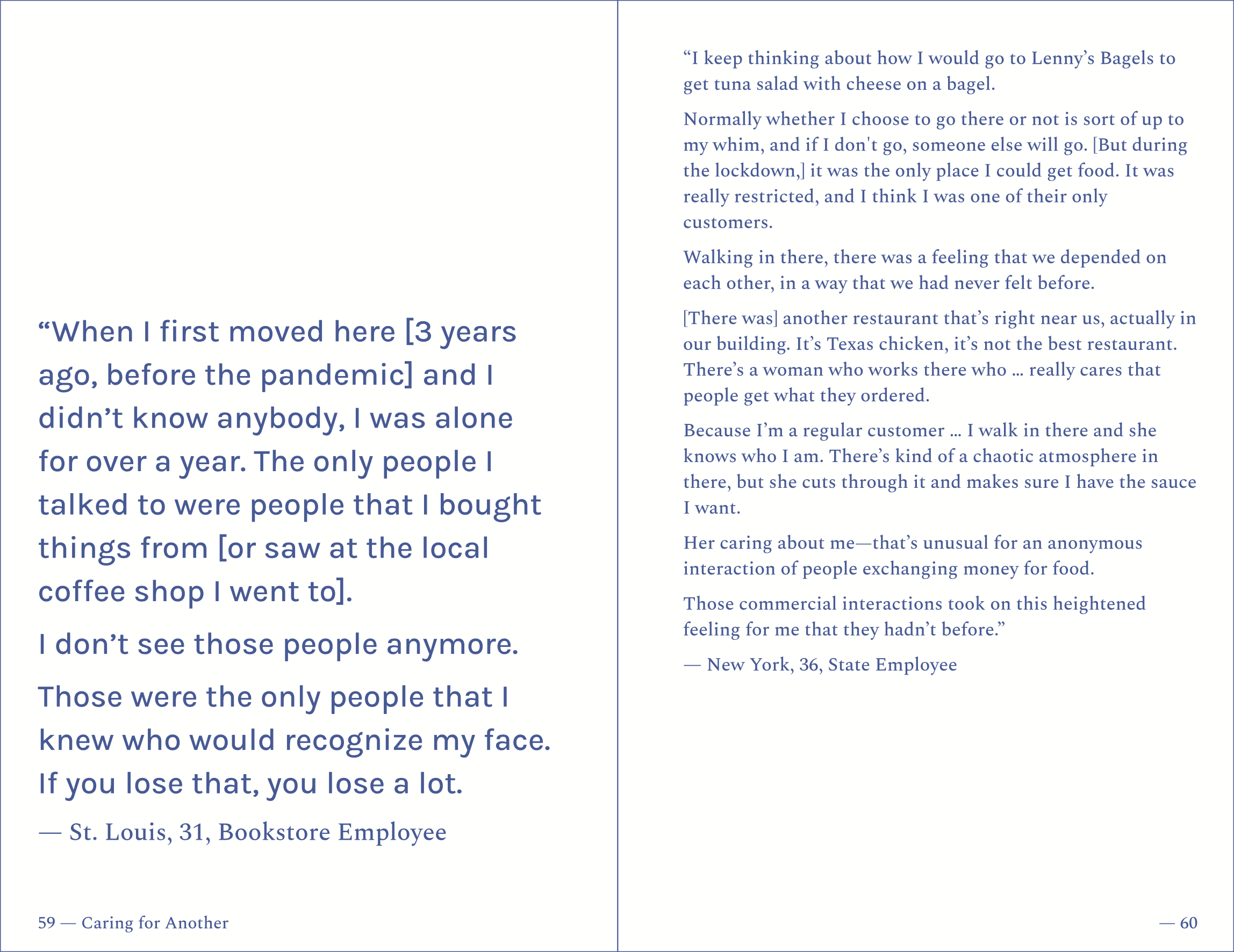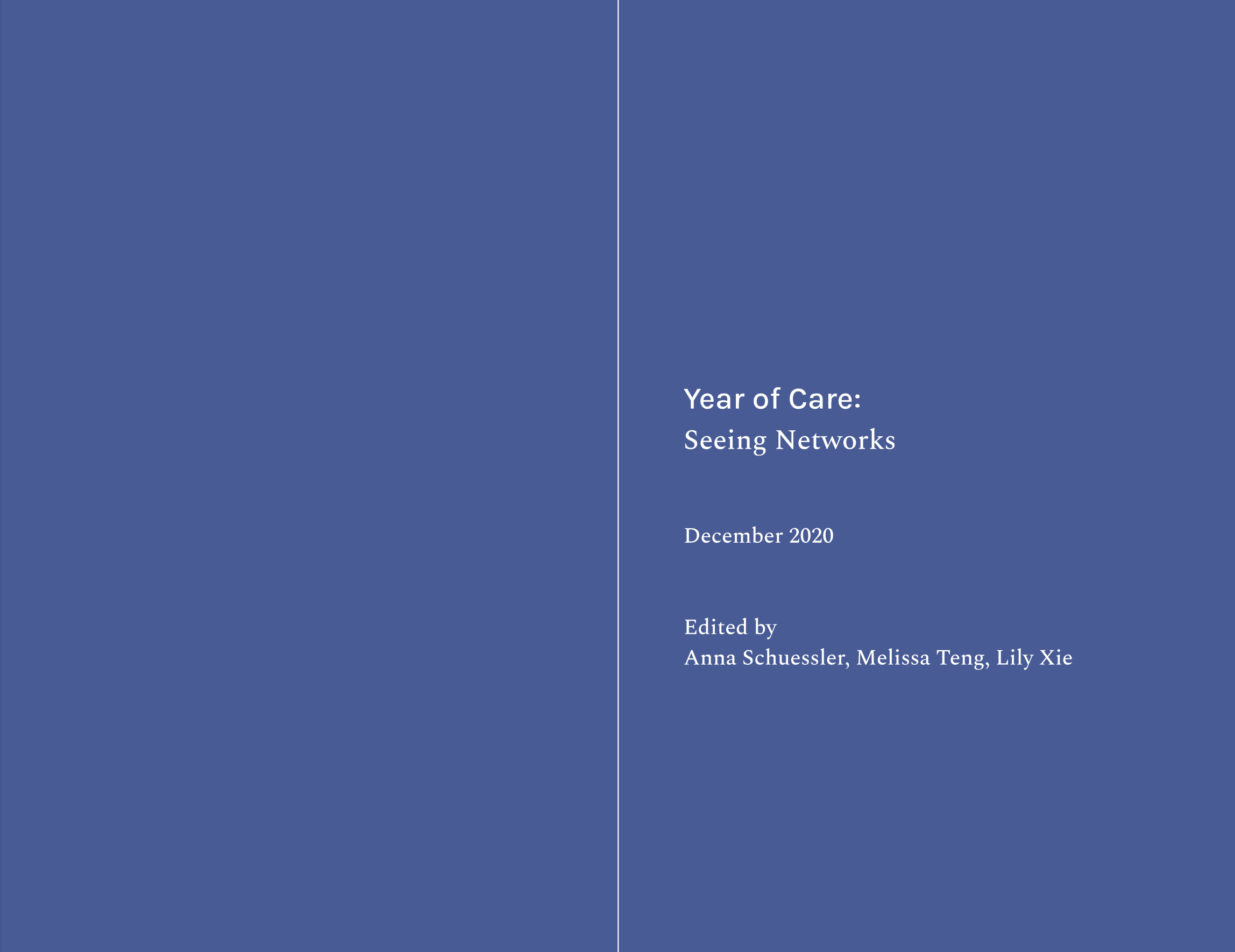2020
Year of Care: Seeing Networks
Co-edited with Anna Schuessler & Lily Xie
Year of Care: Seeing Networks
Co-edited with Anna Schuessler & Lily Xie

Book, 11” x 8.5”, 50 pages.
Two collaborators and I interviewed 15 of our loved ones in October-December 2020 to reflect on how care showed up in their lives during the pandemic, and how it didn't show up. We conducted interviews such that our conversation became itself a form of care. We practiced deep listening and were able to check in with our loved ones and old friendships in ways on an intimate level that we rarely reach, just checking in on one another.
This book of quotes and reflections is an invitation to think about care in intimate and embodied ways, as well as to expand on who can be considered “experts” on care.

Structure
In our conversations, care took the shape of a gesture, a ritual, a network, and an entire system, so we organized our chapters by these different scales of interaction.
Across scales, three foundational themes emerged. The first theme was that care is a skill. We heard many stories of people practicing and honing the ways they care. For some, their skills were only recognized in this time of crisis. For others, they have always practiced care because it has been embedded in their daily lives or it was a survival tactic. Not everyone practices care under the same conditions. For example, “care work” is labor often performed by women, femmes, Brown, Black, and AAPI people who are often under- or unpaid.
The second theme we encountered was that care embodies the future. To care is to nourish the body and sustain it for longevity. We were witness to rituals that embodied and preserved care as a repeated act, as tending to the body, and as nurturing the social fabric that carries this collective care forward.
The third theme was that care is giving presence. One friend described someone dropping off food at their house, saying “it felt caring because someone took the time to do something that was just for me. ... Care feels overbearing if I say I want something ... and someone says, ‘I know something better--let me give that to you instead.’” We heard people learn to listen better to each other this year, which isn’t just about sound. Listening requires noticing, recognizing, and anticipating as well. In short, listening is about presence.


Presence took the form of small cuts of a grapefruit, mutual aid networks that formed within neighborhoods, new ways of understanding within households, and holding each in our consciousness. We quelled the mind’s peripatetic state and listened for others’ grief, unrequited love, and unfulfilled dreams. Masks, walls, and miles obscured the hues of our loved ones’ pain. We struggled and found the words to ask for care. The unpunctuated hours of quarantine that passed forced us to look for these details in ourselves, to see ourselves as people too and not misfits.
Our reflections on care started to reveal a social fabric woven between us. But these networks are not new. For some of us, this was the first time our attention was drawn to collective forms of care on this scale, which inspired new questions about the inadequacies of the care delivered by our institutions and governments.
Through our conversations, we have learned that everyone is an expert on care. We all know the feeling of being cared for and caring intuitively; we sense it in our individual and collective bodies. Across 15 conversations with people close to us, we felt for care’s many dimensions. We’ve seen how, by asking others for what they need, we can tend to more complete versions of them and, by extension, of ourselves.
Places of conversation
Atlanta
Boston
Brooklyn
Chicago
Hood River
Mexico City
New York
Shanghai
St. Louis